Layers of operation
Todd Matsumoto
'In the information age, he complained to senators, “people are running around with digital cameras and taking these unbelievable photographs and then passing them off, against the law, to the media, to our surprise, when they had not even arrived in the Pentagon.'
(Secretary of Defense Donald Rumsfeld at the Senate Panel Hearings)
‘Describing a photo in which she points at the prisoner's genitals, she said, “I was told to stand there, point thumbs up, look at the camera, take the picture.'' And they took a picture for psy-op, and that's all I know.”’
(Private First Class Lyndie England speaking to KCNC-TV in Denver)
‘CAMBONE: This specifically says photographing, filming and videotaping of individual EPWCI, other than internal interment facility administration or intelligence, counterintelligence purposes, is strictly prohibited.’
(Under Secretary of Defense Stephen Cambone at the Senate Panel Hearings)
At the beginning of the second Iraq War, part of the “shock and awe” I witnessed came in the form of mediation. Having been a veteran of the previous Gulf War’s mediation, once again similar images began to hit the airwaves (fig 1). One of the differences between the two wars had to do with me, the consumer, and in this second war my proximity to the war was in contention, it was shocked into perspective. A notion of myself playing a role in the war from the couch was unmistakable. Somehow myself on the couch was a working part for the configuration of the war being played out. Having admitted my compliance and discovered a ‘seam’ in the alleged seamless configuration between sender, TV and consumer, has lead me to think more about this relationship. Its made me reflect on the connection between myself, the media and the war which is happening.
The relation between an event, a media device, and a consumer and the speed with which the elements can come together continues to surprise and interest me. For the Iraq War, the combination of the three elements continually replayed itself through the television in what I finally began to think of as a media bomb blast: the simultaneous or near simultaneous explosion of media signals following an event; extending the blast radius of a bomb with a media device, hitting further targets with a media shock wave.
In having this thought, questions about bombs and media started to come forward. How is a media event like a bomb? Are there casualties of media bombs? Can a media bomb be trapped, looked at or investigated, and moreover, its impact calculated?On April 30th 2004 a large media bomb exploded on ABC’s television magazine 60 Minutes II. The television program aired to the American public the first images of torture coming from now American lead prisons in Iraq.
An outcome to these questions could now be measured in a project I entitled Abu Ghraib. The main visualization of the project came in the form of a map that I created through the process of collecting hypertext media from the New York Times website NYTimes.com, for eleven days from May 6th to the 16th. In order to realize the visual element of the project, the map, I developed some software tools to aid in the research process; using HTML forms, Perl, a MySQL database and a simple search engine.
The following text is a very brief description and analysis of this map as well as some observations about media bombs and further observations about the entire process and what it has revealed to me about media in these circumstances.
First, the map is the assembly of all of the dates ever mentioned within each article for all of the 183 articles I collected, making up the entire collected text body for this project (fig 2). On the bottom line, the x-axis, of the map are all of the mentioned dates from within the articles re-assembled into chronological order (fig 3). On the y-axis are the dates that I’d collected the articles; from the 6th of May to and including the 16th of May 2004.
(fig 2)
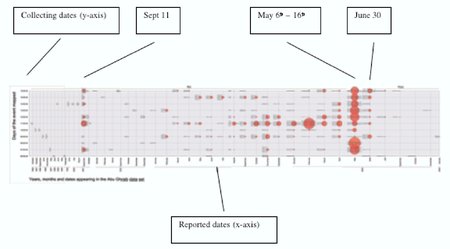
(Fig 3) Download the complete graph here
Setting up the dates coming from within the articles (x-axis) against the dates of the collection period (y-axis) meant that I could use a pin-point (a red dot) to show when an x-axis date (date mentioned from within an article) appeared on the y-axis date (the date that the article was published). Expanding the dot visually indicated the amount of times the x-axis date was mentioned on the particular y-axis reported date.
A consistent vertical spread of dots on the same x-axis date indicated a repetition of that date several more times over the eleven day period of collecting dates.
By doing this I could not only see which x-axis dates had precedence within the context of the entire text body, but it was also possible to immediately see how history was plugged into the event of Abu Ghraib. This is a quantification of the historical parameters (dates) needed in developing the existing event.
The question remains, would this same type of insertion of history happen for another story or would it be different. The disjunctive emergence of dates, blooming throughout the 6th to 16th of May, pitching the reader backwards and forwards through time illustrates that the type of story here, one of revelation (one that is actually much older, beginning nearly a year before the general public release on April 30th, with International Red Cross reports of abuse) perhaps is typical for this type of story. I presume that if I tracked the first hours of the Iraq War the reporting of dates would adhere to a chronological time structure.
In regards to the original question, “is it possible to catch a media bomb”, I would argue yes. The most definitive proof of that would be supported by the dates Sept 11 (fig 4), 2001 and June 30, 2004. These two dates visually came to the surface in the map and were sustaining forces over the entire eleven day collecting period. The Sept 11 date sharply points out the immanent importance of a past historical event connecting to transpiring current events, while also passing forward over the present to begin to hardwire, write the future event: the hand over of Iraq to the Interim Iraqi government on June 30th. Here I remind the reader that the time frame within which I was collecting texts falls in the first part of May. Beyond the scope of becoming visually present through quantity of the date within the entire text body, one could argue that from a historical or memory point of view, Sept 11 in this case was actually being totally re-written to include the event of Abu Ghraib. At this moment Sept 11 was tied to the abuse at Abu Ghraib. The Abu Ghraib event is perhaps the singular event springing forth as a result of Sept 11 out of all the other events transpiring from this date (the invasion of Afghanistan, the Patriot Act, Guantanamo Bay and the Iraq invasion). The Abu Ghraib event most publicly melded into and transformed the understanding of the date Sept 11 as we knew it. This mixing is unfortunate for the Bush administration, damaging one of the administration’s key talking points.
While my original idea was to track a media bomb, what I did not expect to find was the sort of distinct collection of dates. In actual fact, what it revealed was the emergence of several media bombs and their subsequent vectors. Most strikingly, were the two dates; Sept 11 a pervasive and potent media bomb, and the newly emerging, but yet to happen June 30th [the hand over of Iraq] media bomb. Made explicit through the research charted on the map, these dates nicely framed central media bomb of Abu Ghraib.
(Fig 4) Sept 11
With the above observations, other perspectives need to be addressed concerning the media bomb concept. There are differences in modes of dispersion. Here in this situation, it is hypertext that is being analyzed, and not television. In this case, the interaction with an audience is more present and spans a greater amount of time. An online newspaper can be more easily interacted with than television, as is made apparent through the flood of opinions sent to the NYTimes.com newspaper. And it seems that this media event went on to set off many more events, further illustrating the potency of events packed or being packed inside the media.
A sort of geology exists in the different layers or strata of events mixed through a piece of text media. Its different parts, the headline ,a very top level media bomb, as opposed to the explosion of less visually striking media bombs; dates on and in the text, times, again on or in the text, authors, names of subjects relevant to the story, these are pieces that only the software tools allowed me to witness (fig 5). This is the exploration of a characteristic of text media that is difficult to extract without the use of computer software systems, but has always been embedded in text media and can now be exploited by using hypertext media within the bindings of built software systems.
So far, my research has focused mainly on the relation between hypertext and image. However, it also touches upon a larger media ecology. Stringing together in chronological order, the media items used and consumed by this event. By this I mean, cameras, digital photography, hard drives, prints, television, newspaper, not to mention all of the various bits of notes and reports generated as a precedence or result of bureaucratic negotiations or organizations. While my work touched briefly on television’s detonation of the now copied digital images of Abu Ghraib set off on 60 Minutes II, I have not fully investigated the breadth of impact within that ecology as a whole. Perhaps the project has outed a few seams of networked media but certainly this subject could be investigated much further.
Going through the articles I had collected, the question of why were the pictures taken is formulated, the question that breaks the static nature of the image and places the photograph in the realm of working tool; the question places a system of intent behind the images that we, the general public, cannot see. It exposes the image’s parameter and designed placement. This question is asked over and over throughout the text explosion.
Texts proliferate and are continually shifting. It is interesting to note, that within that explosion of words, events are fortified, stories are re-written, or new events are created altogether. All of these divergent stories reveal the incapability of understanding the original context in which the Abu Ghraib images were initially generated in. It is almost impossible for a general public to read those images in a similar way as those who originally took the photographs. That said, that original intention is continually calling to be interpreted. It wants to be reckoned with and the silent fighting folk sitting on the couch, do not have the equipment to understand. We do not understand the object placed before us. If the New York times places these images of torture online we might see them at face value, we might not read them as a strategy, a larger system of torture through representation as a threat.
The strategy and tactics of the image is searched for within both camps responsible for the images and the general public. In a different context the pictures are not torture as we see them. Returning to this notion of a media bomb, the pictures could be called precision guided media bombs, taken along by military police into raids on the streets of Baghdad, to be used as ammo against resisting suspects. In this situation military police officers would deploy this weapon to ‘hit’ someone with its media content if they were not cooperating. In that way another operating system is observed, one that would use this method quite easily, very coolly, as a tool for their own purposes, and here we have what is playing out before us in the online news sources, the various officials, ‘the higher ups’ in the chain of command denying that those types of systems of interrogation, harassment, weaponry and/or physical intimidation exist.
What is revealed and contested is how the images fit into the previously mentioned designed parameters: is it a wayward holiday shot or media weaponry? So which parameter do these images fit into? The answer to these questions reveals the design or original intent of the image.
So there are many ways that a media event can be likened to a bomb. It has intent, victims, targets, and equally so, in controlled environments, media can be, and is thought of like a weapon. All of the pieces “work” when contained in their original contexts, meaning everything goes smoothly and the seams remain in tact.
But when unleashed and taken out of context, for example when the Abu Ghraib images hit mainstream media, and were brought into a non-military view, the seams ruptured creating a media bomb which exploded across different mediascapes. And like a bomb, media bombs can remain undetonated, dormant waiting to explode. It can become potentially active many years past its originally designed purposes. The after shock and resonance of a media bomb is infinite. They operate across time-frames. Their wake impacts not only our perspective on the past, but of the present and the future to come.
(Fig 6)
Bibliography
1. 2004, Dowd World of Hurt NYTimes.com
2. 2004, Lawyer: Soldier Was Smiling, But Unhappy The Associate Press in NYTimes.com
3. 2004, Prisoner Abuse Excerpts The Associated Press in NYTimes.com
Download the complete graph relating to this article here:
MediaBombFiles.zip
[9.5 MB]
Todd Matsumoto
My current work focusses on gathering large
amounts of text (physical or digital) into a database in order to see
the make up of events. What is the essence of an event from the point
of view of a collection of texts, what emerges as items that have
collected significance and can be assumed instrumental to an event.
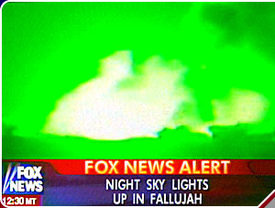
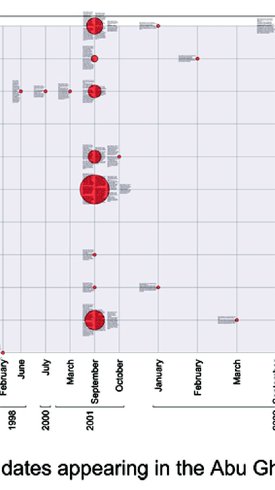
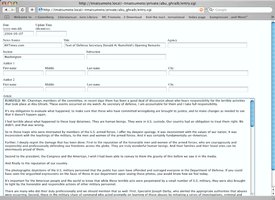
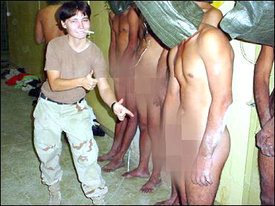
Comments